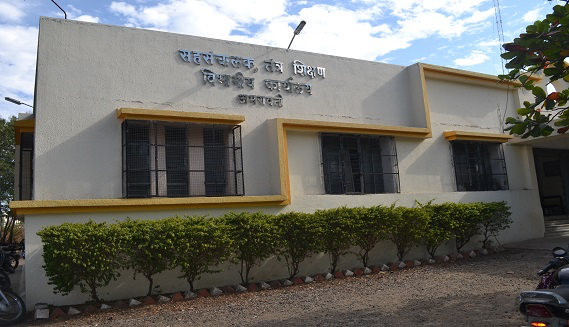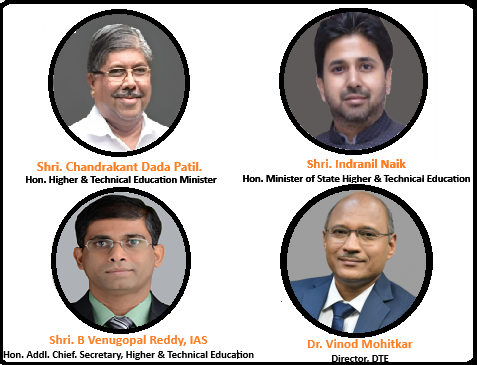Contents
- Main Occupations
- Occupations and Employment Patterns
- Labor Unions
- Technical Education Institutions
- Regional Directorate of Technical Education, Amravati
- Graphs
- Workforce Composition
- A. Main Worker Population
- B. Marginal Worker Population
- C. Non-Worker Population
- D. Age Composition of Main Workers
- E. Age Composition of Marginal Workers
- F. Age Composition of Non-Workers
- Employment Characteristics
- A. Number of Workers
- B. Workers: Hired vs Not-Hired
- C. People Working in Govt Sector/PSUs
- D. People Working in Cooperatives
- E. People Working in Private Sector
- F. People Working in MSMEs
- G. Govt, Semi-Govt, and Private Employees
- H. Government Employment
- MNREGA
- A. Participation in MNREGA
- B. MNREGA Household Scope
- C. Job Cards Issued
- D. Job Cards Issued for SC and ST
- E. MNREGA Accounts
- Sources
AMRAVATI
Labor
Last updated on 7 November 2025. Help us improve the information on this page by clicking on suggest edits or writing to us.
Main Occupations
The occupational landscape of Amravati shows significant transformation since 1911. The district gazetteer records about 6,51,000 people directly dependent on agriculture and 7,000 in pasturage. Supporting roles included roughly 14,000 village servants, 6,000 patels (village heads), 3,000 patwaris (record keepers), and 3,500 hay and fodder sellers. Today, while agriculture remains significant, its nature has evolved. Cotton continues as the primary crop, joined by soybeans, pulses, and oranges. Farming has modernized with mechanization across small, medium, and large holdings. Animal husbandry, particularly dairy farming and poultry, has become a crucial allied sector.
The industrial sector, notably absent in 1911, is now a major employer. Manufacturing industries, especially cotton processing, textiles, food processing, and agricultural implements, provide substantial employment. Trade and commerce have expanded beyond agricultural trading to include retail, logistics, and financial services. Public services employ many in administration, education, and healthcare. Professional services like legal, accounting, and technical consulting form a new category entirely. Emerging sectors, particularly information technology and modern services like specialized healthcare and hospitality, are creating novel employment categories. This diversification reflects broader economic transitions, though agriculture remains important.
Occupations and Employment Patterns
The 1901 census revealed that Amravati's population was predominantly native-born, with the vast majority of residents originating from the district. This suggests a strong local population base during the colonial period.
Migration into Amravati was significant, with the largest influx of migrants coming from the Central Provinces, attracted by higher wages in Berar. Other Berar Districts and Bombay also contributed substantial numbers of migrants, drawn by the cotton industry, railway connections, and shared language. The United Provinces and Rajputana followed with considerable migrant populations. A distinct group of casual laborers known as "Pardesis" came from Upper India in search of work opportunities. While some were genuine job seekers, others may have left their native regions for various undocumented reasons. Due to limited statistical records, the number of people who emigrated from Amravati during this period remains unknown.
On February 14, 2016, Amravati hosted the Shodh Swatchata Women's Global Conference, organized by the Vidarbha Youth Welfare Society. This landmark event demonstrated the region's commitment to addressing women's empowerment and gender equality issues. The conference served multiple purposes:
- It created a platform for comprehensive discussions on women's rights, health, education, and economic empowerment
- It facilitated collaboration between government representatives, NGOs, and community leaders
- It focused on developing practical solutions to enhance women's participation across various sectors
The organization of this conference in Amravati highlighted the region's proactive approach to addressing gender-related challenges and promoting women's participation in the workforce.
Labor Unions
The formal organization of labor in Amravati began in 1957 with the initiation of trade union registration. The district's industrial landscape, dominated by cotton spinning and weaving, ginning and pressing, and oil-crushing industries, provided fertile ground for labor organization. The movement gained particular traction in the motor transport and municipal services sectors.
By 1963, the district had witnessed significant growth in organized labor, with 25 trade unions registered under the Trade Unions Act, 1926. This development reflects the increasing industrialization of the region and the growing awareness of workers' rights during the post-independence period.
Technical Education Institutions
Regional Directorate of Technical Education, Amravati


This vision is pursued through several key objectives: elevating the quality of technical education to meet international standards, implementing efficient and transparent management systems, producing skilled technical professionals to meet industry demands and support economic growth, and strengthening research capabilities within the education system. Through these interconnected goals, the directorate aims to create a robust technical education framework that serves both individual and institutional needs while contributing to broader social development.
Graphs
Workforce Composition
Employment Characteristics
MNREGA
Sources
Government of Maharashtra. 1911 (Reprinted in 1983, e-Book Edition 2006). Gazetteers of the Bombay Presidency: Amraoti District, Volume A. Gazetteers Department, Government of Maharashtra, Bombay.https://gazetteers.maharashtra.gov.in/cultur…
J.D. Roamt. Vision & Mission. J.D. Roamt.https://www.jdroamt.org/vision-mission.html
Sphoorthi Theatre. 2016. World Women Conference 2016. Sphoorthi Theatre.https://sphoorthitheatre.com/docs/2016/world…
Times of India. 2016. [Article Title]. Times of India, February 10.http://timesofindia.indiatimes.com/articlesh…
Last updated on 7 November 2025. Help us improve the information on this page by clicking on suggest edits or writing to us.